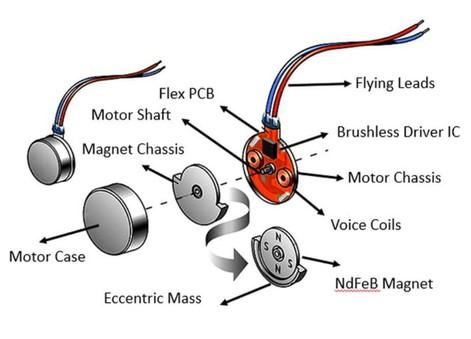How to Effectively Power and Run Motors with 9-Volt Batteries

You might ask if a 9-volt battery can power and run motors effectively. The answer depends on the motor type and its energy needs. Some motors work great with these small batteries, but others require more power. Choose the right motor and connect it properly for optimal results. These batteries are excellent for small gadgets or low-power applications. They are convenient and easy to carry as an energy source.
Key Takeaways
Pick a motor that works with a 9-volt battery. Small DC motors are good, but big ones need more power.
Match the battery's voltage and current to the motor's needs. This stops damage and helps it work better.
Add capacitors to keep the power steady. They make the voltage stable and help the motor last longer.
Check the battery often. If it gets too hot or works less, replace it.
Be careful when hooking up batteries and motors. Use the right tools and avoid overheating to stay safe.
Can 9-Volt Batteries Power and Run Motors?
Compatibility with Different Motor Types
Not every motor works well with 9-volt batteries. You must check the motor type. Small DC motors, like those in toys, often work fine. These motors need low voltage and current, so they match well. Bigger motors, like industrial ones, need more power than 9-volt batteries give. Brushless motors are strong but may not work unless specs match. Always check the motor's voltage and current needs first.
Matching Battery Voltage and Current to Motor Requirements
It’s important to match the battery to the motor. If they don’t match, the motor may not work well or could break. Here’s a table to explain key battery details:
Specification | Description |
|---|---|
Energy Density (Wh/L) | Shows how much energy the battery can store. |
Power Density (W/L) | Tells how much power the battery can give quickly. |
Maximum Continuous Discharge Current | Affects how fast the motor can run steadily. |
Maximum 30-sec Discharge Pulse Current | Helps with short bursts of speed. |
Charge Voltage | Important for knowing how to charge the battery. |
Float Voltage | Keeps the battery charged when not in use. |
Recommended Charge Current | Protects the battery during charging. |
By knowing these details, you can pick the right battery. For example, if your motor needs high power, a 9-volt battery might not work well.

INEED Coin Vibration Motor and 9-Volt Battery Compatibility
INEED coin vibration motors are small and efficient. They run on 3V DC, but a 9-volt battery gives too much power. This can harm the motor or make it wear out faster. To use a 9-volt battery, you need a voltage regulator to lower the voltage to 3V. This keeps the motor safe and working well. These motors are great for small gadgets like wearables. They don’t need much power, so they’re perfect for small, efficient devices.
How to Connect a 9-Volt Battery to a Motor
Tools and Materials for Safe Connections
To safely connect a 9-volt battery to a motor, you need some tools. Here’s what you’ll need:
Battery Cables: Pick strong cables for a reliable connection.
Circuit Breaker or Fuse: This stops electrical overloads from damaging your setup.
Basic Tools: Have pliers, a screwdriver, or a wrench ready to use.
Battery Box (Optional): Protects the battery from water or physical damage.
These tools help make the connection safe and prevent accidents or motor damage.
Step-by-Step Wiring Guide
Here’s how to connect your 9-volt battery to a motor:
Find the Terminals: Look for the positive (+) and negative (-) terminals on the battery and motor.
Attach the Positive Terminal: Connect the battery’s positive terminal to one motor wire.
Attach the Negative Terminal: Link the battery’s negative terminal to the other motor wire.
Secure the Wires: Use clips or soldering to keep the wires firmly attached.
If using two 9-volt batteries for an 18VDC motor, connect one battery’s positive terminal to the other’s negative terminal. Then, attach the remaining terminals to the motor. This setup increases voltage for bigger motors.
Safety Tips for Handling Batteries and Motors
Be careful when working with batteries and motors. Follow these tips:
Avoid Overheating: Check the battery’s temperature to stop it from overheating.
Wear Safety Gear: Use gloves and goggles to avoid burns or injuries.
Prevent Short Circuits: Keep wires apart to stop sparks or damage.
Dispose of Batteries Properly: Follow local rules to safely throw away old batteries.
Modern lithium batteries are safer than older ones, like lead-acid types. Still, handle them carefully to avoid problems when powering motors.
Limits of Using 9-Volt Batteries for Motors
Short Battery Life and Low Power
A 9-volt battery holds only a small amount of energy. It powers motors for a short time before running out. This is a problem for motors needing constant or high energy. The battery drains fast, leaving the motor weak. For instance, a motor needing high current may drain the battery in minutes.
The battery’s power output is also limited. It cannot give enough current for motors needing lots of energy. This makes motors run slower or less effectively. Always check the motor’s energy needs before using a 9-volt battery.
Problems with High-Torque Motors
High-torque motors need more energy to work. A 9-volt battery cannot handle this demand well. When used, the battery might overheat or fail to give steady power. This can make the motor stop or stall completely.
For high-torque motors, use a stronger power source. A 9-volt battery works better with small, low-torque motors. These motors need less energy and work well with limited power.
Overheating Risks and How to Prevent Them
Using a 9-volt battery with motors can cause overheating. This happens when the motor pulls more energy than the battery can give. Overheating harms the battery and shortens its life. It can also cause leaks or, in rare cases, explosions.
To stop overheating, check the battery’s heat while in use. Don’t run the motor for long without breaks. Use a cooling fan or heat sink to keep things cool. These steps make your setup safer and last longer.
Tips for Optimizing Motor Performance with 9-Volt Batteries
Using Capacitors for Stable Power Supply
Capacitors help keep the power steady for motors. When a 9-volt battery powers a motor, the voltage can change suddenly. This happens during startup or when the motor works harder. These changes can lower motor performance or cause damage. Adding capacitors to the circuit makes the power flow smoother and more reliable.
For example, engineers used 104 capacitors in electronics to filter input and output power. This reduced electromagnetic interference (EMI) and kept the voltage stable. It also improved the device's performance. Using capacitors in motor circuits can save energy and make motors last longer. Adding capacitors protects motors and helps them work better.
Reducing Load for Enhanced Efficiency
Lowering the motor's load improves efficiency with a 9-volt battery. A lighter load means the motor uses less energy. This helps the battery last longer. For example, running a fan at half load uses much less power than full load.
Here’s a simple energy comparison:
Load Condition | Energy Use Comparison |
|---|---|
20% less flow | 50% of full-speed energy |
Half-speed operation | 50% energy use |
Fan at half load | 1/8 full-load energy |
In factories, reducing motor loads saves a lot on energy costs. Even in small setups, lowering strain on motors boosts efficiency and performance.

Leveraging INEED Coin Brushless BLDC Vibration Motors for Better Performance
INEED Coin Brushless BLDC Vibration Motors are great for 9-volt battery setups. These motors are efficient and last a long time. They work well in small devices like wearables. Their brushless design reduces friction, saving energy and making them last longer.
These motors have built-in ICs for stable and precise control. You can adjust speed and vibration using PWM signals for better customization. They run on 3V DC, so a voltage regulator is needed with a 9-volt battery. This keeps the motor safe and prevents damage. Choosing these motors gives reliable performance and saves battery power.
Monitoring Battery Health and Knowing When to Replace It
Checking your battery’s health helps your motor work well and safely. A weak or damaged battery can lower performance or harm your motor. Here’s how to check your battery and know when to replace it.
Signs of a Weak or Bad Battery
Watch for these signs that your 9-volt battery might need replacing:
Weaker Motor Performance: If the motor slows down, the battery may be weak.
Shorter Usage Time: A good battery lasts longer. Quick draining means trouble.
Visible Damage: If the battery is leaking, bulging, or corroded, it’s unsafe.
Overheating: A battery that gets too hot is likely near its end.
Tip: Always check your battery before using it with your motor. This avoids damage to your setup.
Simple Ways to Test Battery Health
You can test your battery with these tools:
Multimeter: Check the voltage. A full 9-volt battery should read close to 9 volts.
Battery Tester: Use this tool for a quick strength check.
Load Test: Attach the battery to a small load, like a light bulb, and see how it works.
When to Change the Battery
Replace your battery if:
The voltage drops below 7 volts while in use.
It has leaks, damage, or other visible issues.
It can’t power your motor properly, even after charging.
Note: Recycle old batteries properly. Many recycling centers take used batteries to protect the environment.
By checking your battery often, you can avoid problems and keep your motor running smoothly.
Motors can work well with 9-volt batteries if chosen carefully. Using the right methods and safe connections helps them perform better. Following tips can also make the battery last longer. For small gadgets, INEED's Coin Vibration Motors and Brushless BLDC Motors are great options. These motors are reliable, efficient, and ideal for precise, long-lasting use.
FAQ
What motors work well with 9-volt batteries?
Small DC motors, like toy or gadget motors, work well. These motors need low power, so they match 9-volt batteries. Bigger motors, like industrial ones, need more energy and won’t work well.
Can you use a 9-volt battery without lowering voltage?
Yes, but only if the motor matches the battery’s voltage. Motors needing less voltage, like INEED Coin Vibration Motors (3V), need a regulator. This lowers the voltage to keep the motor safe.
How long does a 9-volt battery last with a motor?
Battery life depends on how much energy the motor uses. Small motors may run for hours. High-power motors can drain the battery in minutes. Check the motor’s energy use to guess battery life.
Is it safe to use more than one 9-volt battery?
Yes, if you connect them the right way. For higher voltage, connect batteries in series. For longer use, connect them in parallel. Always check the motor’s limits to avoid damage.
Why are INEED Coin Brushless BLDC Motors better?
These motors have no brushes, so they waste less energy. They last longer and work efficiently. Their built-in IC keeps them steady, making them great for small devices with 9-volt batteries and a regulator.
See Also
Utilizing 3V DC Motors Across Five Different Devices
Exploring Battery-Powered Motors: Varieties, Uses, and Efficiency Tips
Frequent Issues with 3 Volt Motors and Fixes
Ten Key Uses of 3V DC Motors in Today's Electronics
Choosing Electric Motor Batteries: Efficiency, Selection, and Uses
Get Custom Micro DC Motors from
INEED Motors!
Leading Brand in Vibration Motor Manufacturing Industry
